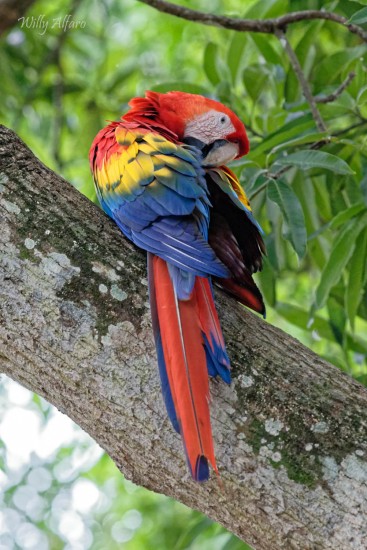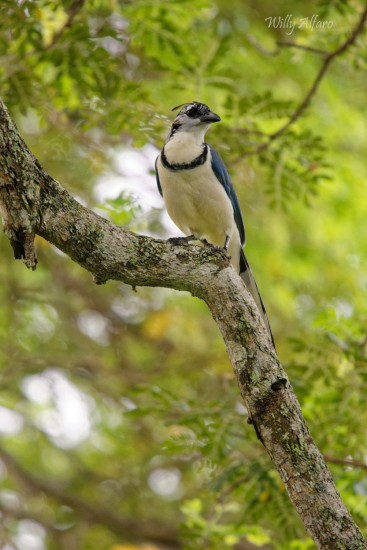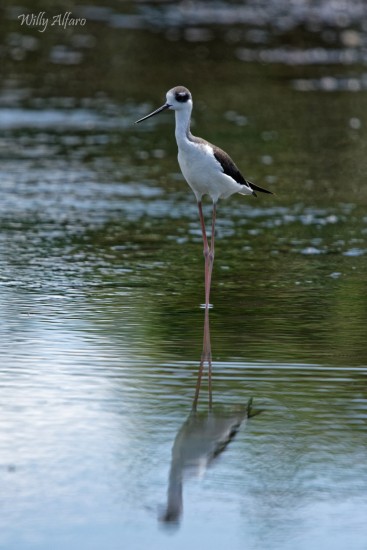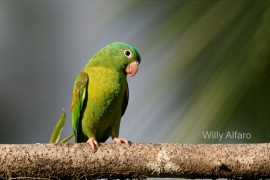
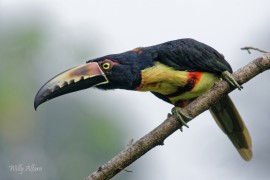
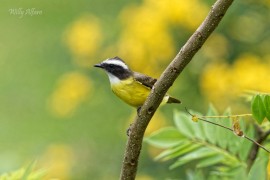
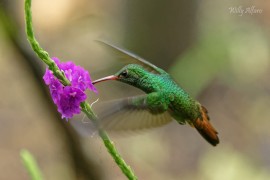
This Nikon AF-S Nikkor 300mm f/4E PF ED VR lens review for birding is by Willy Alfaro Cervantes:
In mid October I lead a bird watching trip, 10 days around Costa Rica, photographing birds. I used a Nikon D7200 with the Nikkor 300mm E PF ED VR and a Nikkor TC-14E III. All pictures were taken handheld
The camera
The Nikon D7200 has 24.2 megapixels in DX crop and native ISO 100-25600, very convenient for the challenging light in the Tropical forests. It also has a 1.3x crop that allows you to shoot 7 fps, which turns your lens 2 times “longer”, so roughly the lens with the TC that are 420mm end up being equivalent to 840mm at 15.4 megapixels (the D810 in DX is 15.4 megapixels).
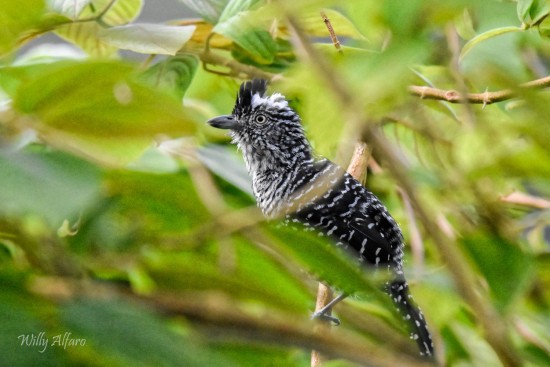
Barred Antshrike – Nikon D7200 with Nikkor 300mm f/4 PF + TC-14E III, 1/500s, f/5.6, ISO 3200
The lens
The newer version of Nikkor 300mm f/4E PF ED VR has great features. Besides the VR, basic nowadays, Nikon incorporates a PF (Phase Fresnel) element, which allows the lens to be 1/3 shorter and 1/2 lighter than the previous 300mm f/4. This element also helps control chromatic aberration -CA very well.
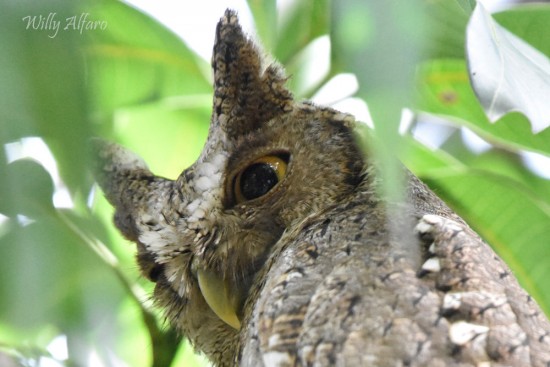
Detail of Pacific-screech Owl – notice the fairly well controlled CA. Nikon D7200 with Nikkor 300mm f/4 PF + TC-14E III, 1/640s, f/6.3, ISO 6400. No editing, basic JPEG from camera.
Other great new features (compared to the older 300mm f/4) are the Fluorine Coat, first used in the new Nikkor 400mm f/2.8, that repels water and dust, the Nano Crystal Coat and the Electromagnetic Diaphragm, among others.
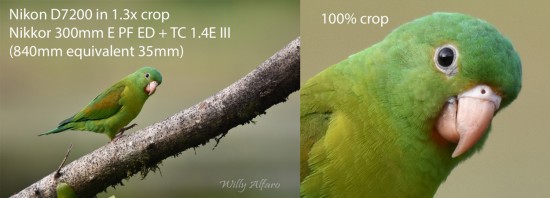
Crop showing sharpness and contrast. JPEG out of camera, basic.
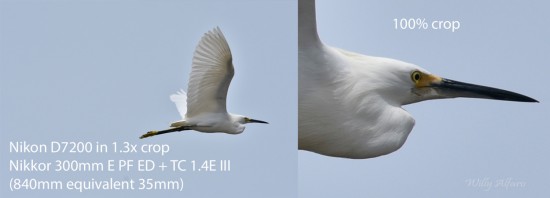
Crop showing sharpness and contrast. JPEG out of camera, basic.
The teleconverter
The TC-14E III is excellent, magnifying the lens 1.4 times, and closing the aperture 1 full stop, so the lens turns into a 420mm f/5.6. The fluorine coat and Super Integrated Coating make this TC a perfect combo since you don’t really loose image quality.
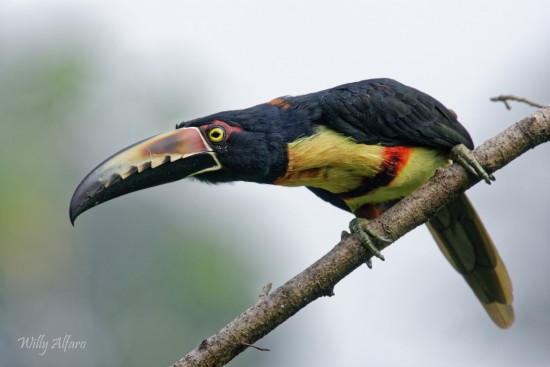
Collared Aracari – Nikon D7200 with Nikkor 300mm f/4 PF + TC–14E III, 1/500s, f/8, ISO 220
First impressions
As soon as I took the lens out of the box I felt surprised on how small and light it is. Attached with the camera and the TC-14, it was all 1.7 kgs or 3.77 pounds.
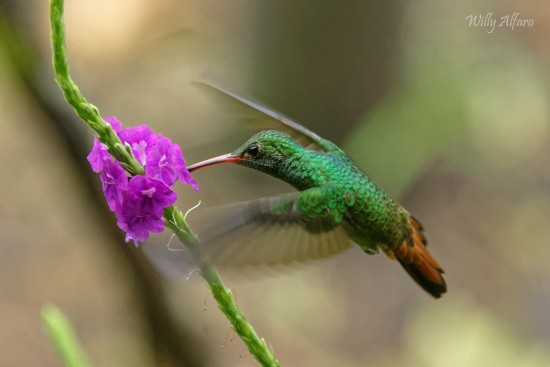
Rufous-tailed Hummingbird – Nikon D7200 with Nikkor 300mm f/4 PF + TC–14E III, 1/500s, f/8, ISO 4000
The combo felt well balanced and easy to maneuver, especially for birds in flight. Focus is fast, hunting only in low contrast, but is something you can override manually and seamlessly.
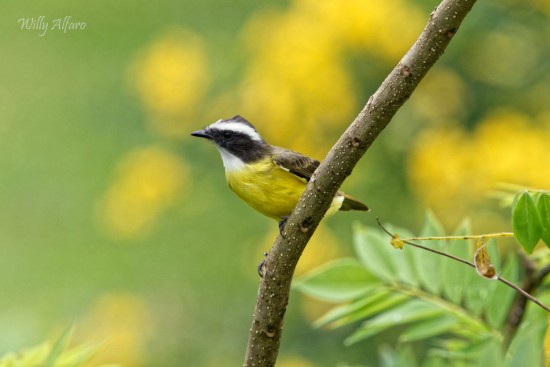
Social Flycatcher – Nikon D7200 with Nikkor 300mm f/4 PF + TC–14E III, 1/500s, f/8, ISO 500
In the D7200 the 300mm + TC-1.4 is 420mm x 1.5=630, a great reach, and if you use the 1.3x crop of the camera, your 420mm turns into an 840mm with 7 frames per second, very convenient for following the action even in the distance.
Optics
Out in the field, the lens delivery was impressive, outstanding IQ. The birds’ feather details were outstanding as well as the contrast and color.
It was hard to believe the sharpness and contrast for a lens that cost less that +5K. The bokeh is very good, even if you shoot with some light in the back, the circles don’t have a border, like other mid-price lenses.
Conclusions
The Nikkor 300mm f/4E PF ED VR is really good for bird photography. Although it is 1 stop slower than the 300mm f/2.8 is also +$4.000 cheaper, and with nowadays high ISO capabilities, I was willing to sacrifice 1 stop.
The lens focuses close, even with the TC-14, I was actually able to focus at 60 inches with a 420mm lens… very convenient in some occasions, although it is slowing focusing alone the whole range, but you can select the limiter to 3m – ∞.
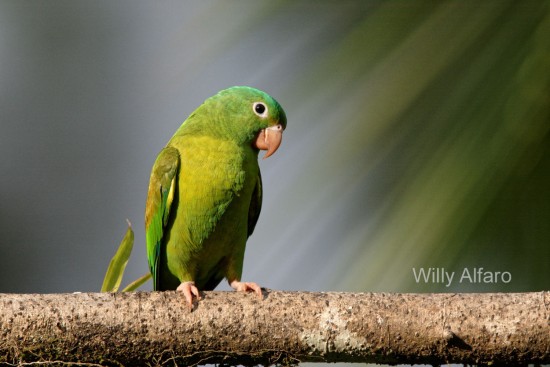
Orange-chinned Parakeet – Nikon D7200 with Nikkor 300mm f/4 PF + TC–14E III, 1/1000s, f/8, ISO 320
Nikon did a great job incorporating the PF element, you get almost no chromatic aberration thanks to the PF element and in real life, with normal light, you don’t see any bad flares against the light. I guess you would need to point into very bright light in dark spaces to see the PF flares.
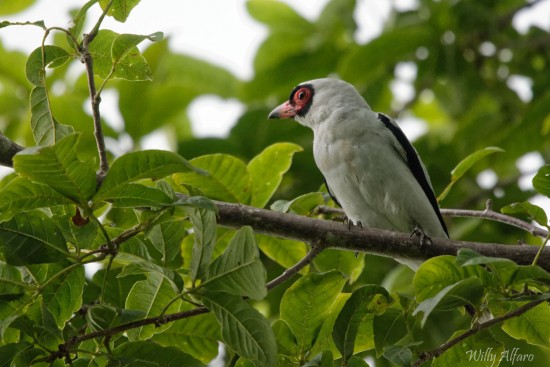
Masked Tityra – Nikon D7200 with Nikkor 300mm f/4 PF + TC–14E III, 1/1250s, f/5.6, ISO 1400
The combo worked great for me, I got a lot of images in focus despite I was shooting handheld. And thanks to the quality of the optics the transmission of light was great even with high ISO or distant subjects.
In the future I will test the lens with the TC-17, for a 510mm f/6.3, it may well be another option, especially for birds in well lit open areas such as wetlands.
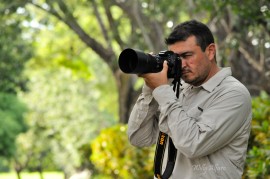
Photo courtesy of Katya Barrantes.
You can visit my website at www.willyalfaro.com for more about tropical birds and photography.
If you have an interesting idea for a guest post, you can contact me here.
The Nikon AF-S Nikkor 300mm f/4E PF ED VR lens is finally in stock in the US.
